Record-breaking year for Jordan’s water sector
11 June 2025

Jordan’s utilities sector made a record-breaking start to 2025 with the award of the $3bn Aqaba-Amman water conveyance and desalination project contract.
The long-planned project is a major step forward in addressing Jordan’s water scarcity and represents the kingdom’s largest planned water infrastructure project to date.
The Aqaba-Amman award means that by the end of May, there had been $3.5bn of contract awards in 2025, according to regional projects tracker MEED Projects, which exceeds the cumulative total for the previous 10 years.
It is also only the second time on record that Jordan will award more than $1bn-worth of water construction projects in a calendar year. The last time was in 2007, when there were $1.1bn of contract awards.
The contract for the build, operate and transfer project was signed on 12 January by Jordan’s Ministry of Water & Irrigation and a consortium led by Paris-based firms Meridiam and Suez.
The project’s desalination plant will have an initial capacity of 300,000 cubic metres a day (cm/d), expandable to 835,000 cm/d, using reverse osmosis technology. It also includes 450 kilometres of pipelines to transport desalinated water from the Gulf of Aqaba to Amman.
The developer consortium also includes Egypt’s Orascom Construction and France’s Vinci Construction Grands Projets.
Wastewater tender
In addition to the Aqaba-Amman project, another significant water development this year is the tendering of package five for the West Irbid wastewater network project. Water Authority Jordan (WAJ) has invited bids for sewerage collection systems and gravity trunk lines for the towns of Soum and Kufr Youba.
The project will be financed by a loan and grant administered by the European Bank for Reconstruction & Development (EBRD). The West Irbid wastewater treatment plant project, for which WAJ secured $30m in financing last year, will treat 12,000 cm/d once completed.
Power contracts
In the power sector, there had been $33m of contract awards by the end of May, according to MEED Projects. The full-year total last exceeded $100m in 2022, when there were $111m of contract awards, and the last time there was a significantly large total was in 2018, when there were $910m of contract awards.
The totals may improve soon. This year, Jordan’s Energy & Mineral Resources Ministry (MEMR) sought interest from firms for a 200MW solar photovoltaic project. This project will be developed on a build, own and operate basis and will connect to the national grid via National Electric Power Company (Nepco).
Additionally, Nepco plans to procure a gas-fired power station with a design capacity of around 500MW, which is expected to be developed using an independent power project model. Advisers are currently being sought for this project.
In February, Nepco secured a €67.1m ($70.2m) financing package from the EBRD and the EU. This package, consisting of an EBRD loan of up to $56.5m and an EU investment grant of up to €12.4m ($13m), will fund the construction of a high-voltage electricity substation in northern Jordan.
This substation aims to improve the grid’s capacity to handle existing and new generation, facilitate cross-border interconnections and reduce transmission losses. The project includes the construction of four overhead transmission lines, supporting Jordan’s renewable energy targets for 2030.
Regional leader
Today, solar and wind power account for over 30% of Jordan’s total installed capacity of approximately 7.1GW as of 2023. This makes Jordan one of the leaders in renewable energy installed capacity in the Middle East and North Africa region relative to its overall generation capacity.
Completed projects include the 89MW Fujeij wind power plant, which became operational in 2019, and the 373MW Qatrana gas-fired combined-cycle power plant, which was commissioned in 2011. Both are backed by long-term power-purchase agreements with Nepco.
These projects highlight Jordan’s ability to attract financing, particularly from GCC states, for its renewable energy projects.
Reassurance required
Looking ahead, the status of upcoming water and power projects indicates both progress and challenges. While significant strides have been made with the Aqaba-Amman water project, some projects face delays.
According to data from MEED Projects, there are $3.3bn of power projects either under way or planned in Jordan, with generation plants accounting for 59% of this total.
Despite Jordan’s strong renewable energy resources and regulatory framework, inconsistencies in energy policy, such as the introduction of additional taxes and reluctance to allocate land for renewable energy projects, have created bottlenecks and reduced investor confidence. This has led to several slow-moving projects.
The fact that only one developer team submitted a bid for the Aqaba-Amman project shows the limited appetite for large-scale projects and Jordan’s utility sector in general. Smaller water treatment and desalination schemes, as well as power substation projects, have proven to be more successful at attracting bidders.
For Jordan to overcome these challenges, it must reassure investors and contractors. The award and successful execution of the $3bn Aqaba-Amman project will go a long way towards providing the market with the reassurance it needs.
MEED's July 2025 report on Jordan also includes:
> ECONOMY: Jordan economy nears inflection point
> GAS: Jordan pushes ahead with gas plans
Exclusive from Meed
-
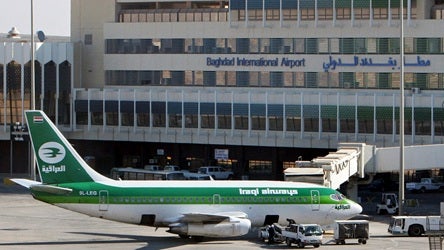 Iraq awards Baghdad airport PPP deal
Iraq awards Baghdad airport PPP deal29 October 2025
-
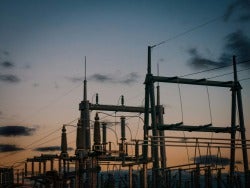 Saudi Electricity Company secures $3bn financing deal
Saudi Electricity Company secures $3bn financing deal29 October 2025
-
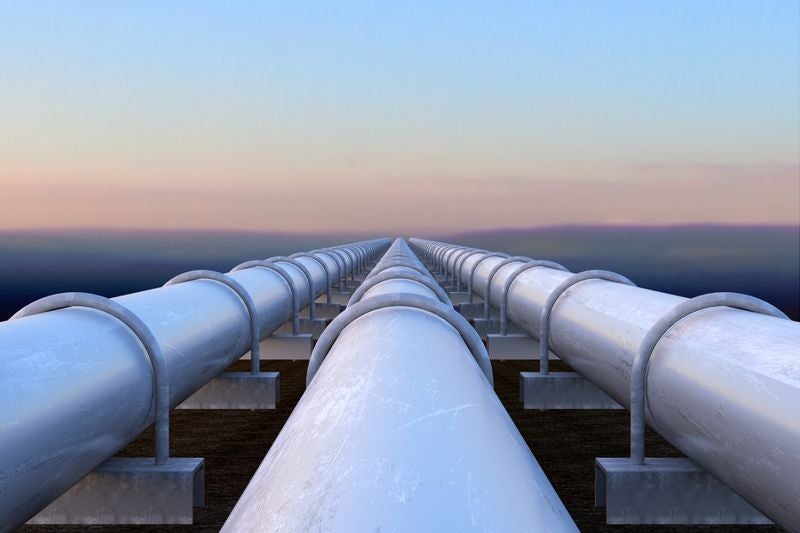 Design work completed for $1bn Libyan pipeline
Design work completed for $1bn Libyan pipeline29 October 2025
-
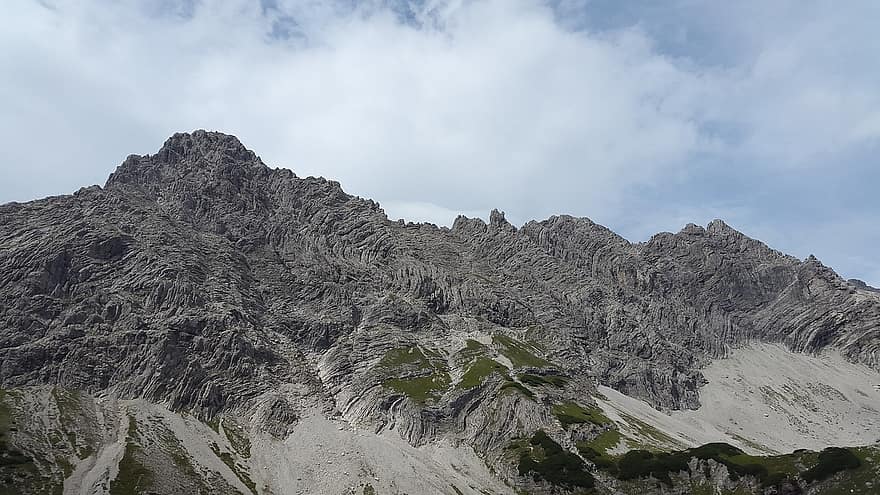 Qatari firm tenders Oman gabbro mining works
Qatari firm tenders Oman gabbro mining works29 October 2025
-
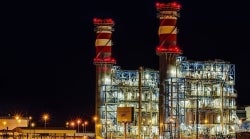 Kuwait forms project company for Al-Zour North expansion
Kuwait forms project company for Al-Zour North expansion29 October 2025
All of this is only 1% of what MEED.com has to offer
Subscribe now and unlock all the 153,671 articles on MEED.com
- All the latest news, data, and market intelligence across MENA at your fingerprints
- First-hand updates and inside information on projects, clients and competitors that matter to you
- 20 years' archive of information, data, and news for you to access at your convenience
- Strategize to succeed and minimise risks with timely analysis of current and future market trends

Related Articles
-
 Iraq awards Baghdad airport PPP deal
Iraq awards Baghdad airport PPP deal29 October 2025
Register for MEED’s 14-day trial access
Iraq has awarded a contract to develop Baghdad International airport on a public-private partnership (PPP) basis to a consortium comprising Luxembourg-based Corporacion America Airports (CAAP) and local firm Amwaj International.
According to local media reports, the estimated $764m contract covers the rehabilitation of airport infrastructure, construction of a new passenger terminal, and operations and maintenance under a 25-year concession.
In a statement on its website, the Ministry of Transport said the airport’s initial capacity is expected to be around 9 million passengers, gradually increasing to 15 million.
Iraq’s Ministry of Transport and General Company for Airports & Air Navigation Services received the bids earlier this month, MEED reported.
The bidding consortium included:
- Asyad Holding / Top International Engineering Corporation / Lamar Holding / YDA Insaat / Dublin Airport Authority (Saudi Arabia/Saudi Arabia/Saudi Arabia/Turkiye/Ireland)
- Corporacion America Airports / Amwaj International (Luxembourg/Iraq)
- ERG International / Terminal Yapi / ERG Insaat (UK/Turkiye/Turkiye)
The media report added that the winning consortium offered the government 43.05% of total airport revenues.
The Asyad-led consortium offered 38.05%.
The ERG International-led consortium was disqualified from the bidding process.
The International Finance Corporation (IFC), a member of the World Bank Group, is the project’s lead transaction adviser.
https://image.digitalinsightresearch.in/uploads/NewsArticle/14971278/main.jpg -
 Saudi Electricity Company secures $3bn financing deal
Saudi Electricity Company secures $3bn financing deal29 October 2025
Saudi Electricity Company (SEC) has signed a $3bn financing agreement with a consortium of international banks at the Future Investment Initiative Forum (FII9) in Riyadh.
The financing comes as SEC continues to expand its project portfolio to meet rising electricity demand. In September, SEC outlined plans to invest SR220bn ($58.7bn) in power projects between 2025 and 2030.
This includes SR135bn ($36bn) and SR85bn ($22.7bn) for transmission and distribution, respectively, and is part of long-term plans to meet growing electricity demand while improving grid efficiency and reliability.
The financing partners include the UAE's Abu Dhabi Commercial Bank, Abu Dhabi Islamic Bank, Dubai Islamic Bank and Emirates NBD.
Also included are Bank of East Asia (Hong Kong), Bank of China, Barclays (UK), China Construction Bank, HSBC (UK), Industrial and Commercial Bank of China (China), ING (Netherlands) and Mega Bank (Taiwan)
The state-controlled utility, majority-owned by the Public Investment Fund (PIF), has dominated procurement activity in the power sector in 2025, awarding approximately $6bn-worth of contracts.
This has been led by two standalone projects in Dawadmi and Riyadh, each with a capacity of 500MW/2,000MWh and an estimated value of about $600m.
The utility continues to advance other major developments including the PP13 and PP14 combined-cycle gas turbine (CCGT) power plants in Riyadh. In October, it signed $3.4bn in offtake deals for the plants, which have a total capacity of 3,356MW.
It also recently reached financial close for Saudi Arabia’s Qurayyah CCGT independent power project (IPP) expansion.
SEC will develop, finance, build, own and operate the 3,010MW plant as part of a consortium with Saudi Arabia's Acwa Power and Hajj Abdullah Alireza & Company (Haaco).
Alongside its financing agreement, SEC launched a new Supply Chain Financing Programme during FII9 in partnership with local fintech Manafa and US-headquartered SAP Taulia, supported by the Saudi Industrial Development Fund.
The initiative aims to improve liquidity across the energy supply chain and enable suppliers to access fast financing at more competitive rates.
https://image.digitalinsightresearch.in/uploads/NewsArticle/14971266/main.jpg -
 Design work completed for $1bn Libyan pipeline
Design work completed for $1bn Libyan pipeline29 October 2025

Front-end engineering and design (feed) work has been completed for the major oil pipeline that will extend from oil fields in the south of Libya to the oil export terminal of Es Sider, according to industry sources.
Libya’s Waha Oil Company, a subsidiary of state-owned National Oil Corporation (NOC), is developing the pipeline.
The 700-kilometre pipeline will have a diameter of 32 inches and the capacity to transport 1 million barrels a day (b/d) of oil.
One source said: “It is crucial that the existing pipeline is replaced. The existing pipeline is suffering frequent leaks and cannot handle higher pressures.
“In 1960, when the pipeline was installed, the pipe thickness was 36mm, but it is now so worn out that this has been reduced to around 8mm across much of the pipeline. In some spots, it is even less than 8mm.
“Production cannot be increased at the oil field due to this ageing facility.”
Waha is preparing to eventually tender an engineering, procurement and construction (EPC) contract for the project, which is estimated to have a value of between $1bn and $1.25bn.
Although the pipeline’s actual usage is unlikely to exceed 300,000 b/d for some time after its completion, it is being designed to be ready for a significant increase in oil production from Libya’s southern oil fields.
It is unclear when Waha plans to issue an invitation to bid for the project’s EPC contract.
In 2012, Waha announced a project to replace key oil pipelines in Libya, but funding issues delayed the timeline and invitations to bid were never issued.
In January 2024, MEED reported that Waha was considering plans to boost its production by 1 million b/d.
At the time, the subsidiary was producing about 300,000 b/d.
Earlier this month, NOC announced that the country’s crude oil production had reached 1,383,430 barrels a day (b/d).
The company said that natural gas production was 2,519 million cubic feet a day (cf/d), while condensate production was 49,013 b/d.
NOC said it aimed to further increase production capacity to approximately 1.6 million cf/d by 2026.
https://image.digitalinsightresearch.in/uploads/NewsArticle/14970171/main.jpg -
 Qatari firm tenders Oman gabbro mining works
Qatari firm tenders Oman gabbro mining works29 October 2025
Register for MEED’s 14-day trial access
Qatar Primary Materials Company (QPMC) has issued a tender for additional works at its gabbro mining development in the Khatmat Milaha area of Oman, close to a border crossing with the UAE.
The broad scope of work involves the remaining works for two gabbro quarries and the construction of an export jetty at Khatmat Milaha, state-owned QPMC, also known as Al-Awalia, said in the tender notice.
Firms have until 11 November to submit bids for the tender, QPMC said.
QPMC owns a 3 million tonne‑a‑year (t/y) gabbro quarry at Khatmat Milaha in Oman, which is understood to have been commissioned in 2020. The quarry has an expandable capacity of 7 million t/y.
The Omani quarry project had been planned for a number of years. In 2015, QPMC signed an agreement with Belgian firm Rent-A-Port to start work on the Khatmat Milaha quarry project.
Rent-A-Port was the consultant for QPMC’s gabbro port in Qatar. A joint venture of Denmark’s FLSmidth and Sixco completed the estimated QR1.6bn ($430m) contract to build the aggregate berths in 2017.
https://image.digitalinsightresearch.in/uploads/NewsArticle/14968152/main2817.jpg -
 Kuwait forms project company for Al-Zour North expansion
Kuwait forms project company for Al-Zour North expansion29 October 2025
Register for MEED’s 14-day trial access
Kuwait has formally established a new public shareholding company to manage the next stages of the Al-Zour North independent water and power plant (IWPP).
The Gulf Alliance for Power & Water Company will be responsible for the construction, implementation, management, operation and maintenance of Al-Zour North IWPP phases two and three.
The Al-Zour North phases two and three IWPP involves constructing a 2,700MW power plant and a 120-million-imperial-gallon-a-day desalination facility. The project’s total estimated value is approximately $4bn.
In August, Saudi Arabia’s Acwa Power and Kuwait-based financial institution Gulf Investment Corporation (GIC) signed a contract to develop the project, which will be the country’s largest IWPP.
The consortium of Acwa Power and GIC will hold 40% of the project company through Al-Zour Kuwaiti Second & Third Holding Company.
The Public-Private Partnership Authority will hold 10% on behalf of government entities, while 50% will be offered to Kuwaiti citizens through a public subscription process.
Al-Zour North IWPP phases two and three is owned by the Kuwait Authority for Partnership Projects (Kapp) and the Ministry of Electricity, Water & Renewable Energy.
It will be developed under a build-operate-transfer model with a 25-year offtake agreement.
Sepco3 is the EPC contractor for the project.
The project company has been set up with an authorised and issued capital of KD197.032m ($639m).
This capital is divided into 1.97 billion shares, each with a nominal value of 100 fils. The paid-up capital at the time of establishment is KD49.2m.
https://image.digitalinsightresearch.in/uploads/NewsArticle/14963914/main.jpg



